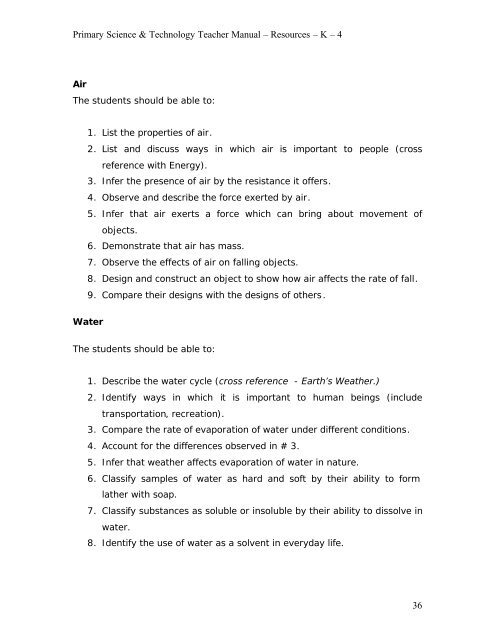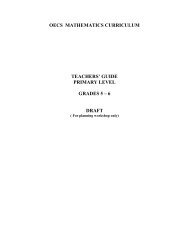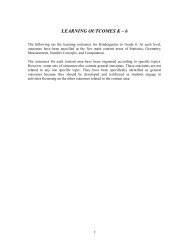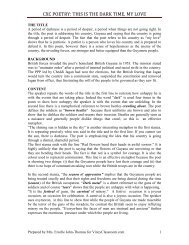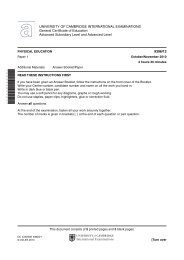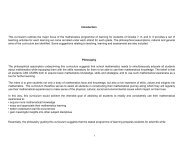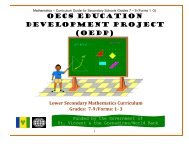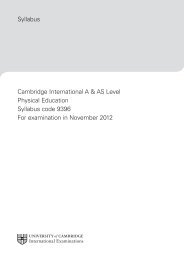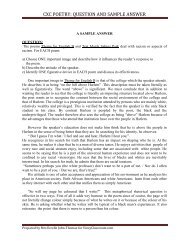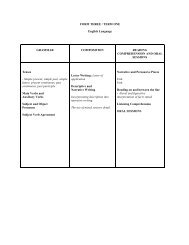Primary Science and Technology Teachers' Guide - OECS
Primary Science and Technology Teachers' Guide - OECS
Primary Science and Technology Teachers' Guide - OECS
You also want an ePaper? Increase the reach of your titles
YUMPU automatically turns print PDFs into web optimized ePapers that Google loves.
<strong>Primary</strong> <strong>Science</strong> & <strong>Technology</strong> Teacher Manual – Resources – K – 4<br />
Air<br />
The students should be able to:<br />
1. List the properties of air.<br />
2. List <strong>and</strong> discuss ways in which air is important to people (cross<br />
reference with Energy).<br />
3. Infer the presence of air by the resistance it offers.<br />
4. Observe <strong>and</strong> describe the force exerted by air.<br />
5. Infer that air exerts a force which can bring about movement of<br />
objects.<br />
6. Demonstrate that air has mass.<br />
7. Observe the effects of air on falling objects.<br />
8. Design <strong>and</strong> construct an object to show how air affects the rate of fall.<br />
9. Compare their designs with the designs of others.<br />
Water<br />
The students should be able to:<br />
1. Describe the water cycle (cross reference - Earth’s Weather.)<br />
2. Identify ways in which it is important to human beings (include<br />
transportation, recreation).<br />
3. Compare the rate of evaporation of water under different conditions.<br />
4. Account for the differences observed in # 3.<br />
5. Infer that weather affects evaporation of water in nature.<br />
6. Classify samples of water as hard <strong>and</strong> soft by their ability to form<br />
lather with soap.<br />
7. Classify substances as soluble or insoluble by their ability to dissolve in<br />
water.<br />
8. Identify the use of water as a solvent in everyday life.<br />
36


